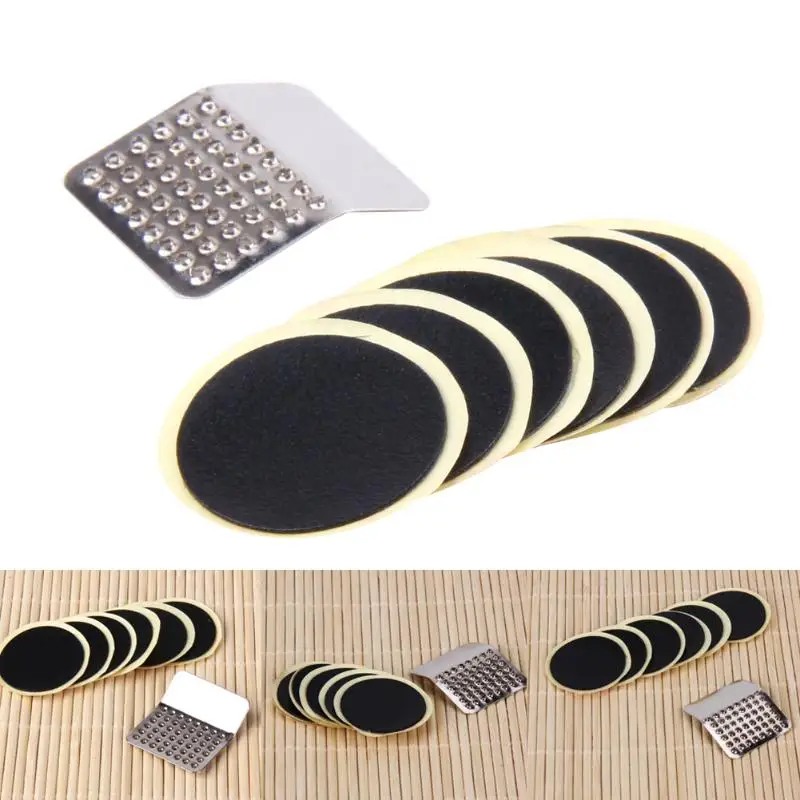So, you have a flat tire or one that’s leaking air. It’s not the end of the world. Luckily there are safe and cost-effective ways to properly repair most tire punctures. The purpose of this article is to show you the difference between a safe, permanent repair and a temporary string, plug or patch repair.
According to the National Highway Traffic Safety Administration (NHSTA) and the Tire Industry Association (TIA), the only method to properly repair a tire puncture is to fill the injury with a repair stem and back the stem with a repair patch. This is commonly known as a combination repair or a patch/plug repair.
Patch/plug repairs are most often performed using a one-piece repair unit that combines the repair stem and cap (or patch) into one unit. However, special circumstances may require the use of a two-piece combination repair (ex. If the angle of the puncture exceeds 35 degrees). The repair is then permanently bonded to the inside of tire and through the injury channel using a cold, chemical vulcanizing process.
The repair essentially becomes part of the tire, creating an air-tight seal that keeps air in and moisture and contaminants out (more on this procedure below).
Emergency roadside plug repairs are NOT intended to be a permanent tire repair. Plugs and string repairs are designed to get you back up and rolling long enough to get home or to the nearest service center to perform a proper tire repair.
The common misconception with plug and string repairs is that because they hold air, they are safe to use. While it is true that many plug repairs do a great job of keeping air in the tire, that’s only part of the equation. Because they’re not completely sealing the injury, plug repairs may allow air and moisture to penetrate the body of the tire. Over time, this could lead to a dangerous (or even deadly) blowout.
A Patch-Only Tire Repair Leaves Your Tire Susceptible to DamageA tire repair that uses only a patch is also NOT considered proper or safe.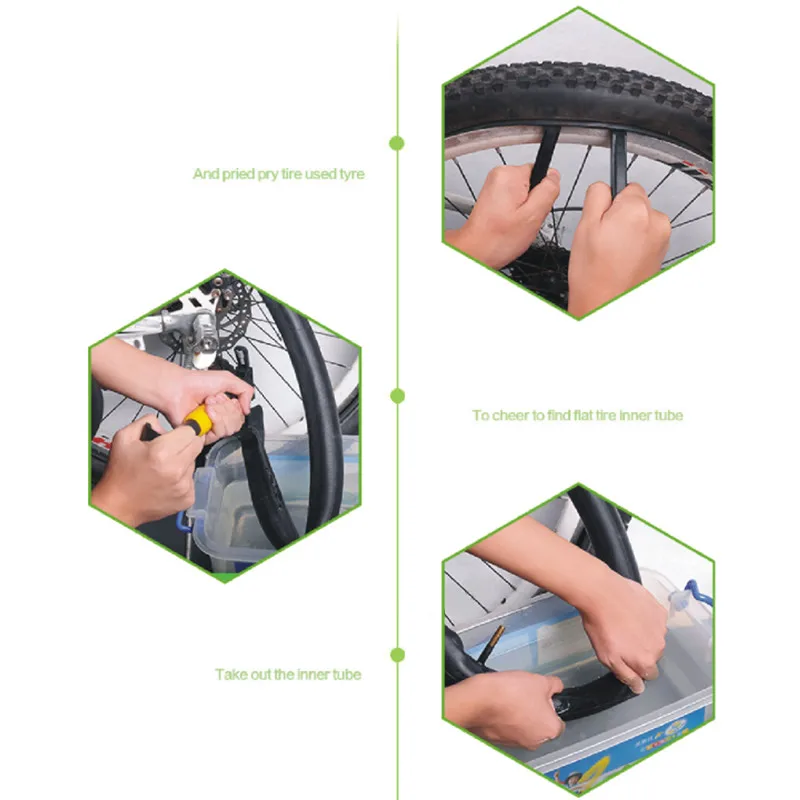 A properly installed patch will do a great job of allowing the tire to hold air. However, similarly to the plug-only repair, the patch does not fill the injury channel. Therefore, air and moisture could seep into the tire from the tread surface and eventually damage the tire.
A properly installed patch will do a great job of allowing the tire to hold air. However, similarly to the plug-only repair, the patch does not fill the injury channel. Therefore, air and moisture could seep into the tire from the tread surface and eventually damage the tire.
Only a proper patch/plug repair completely seals the puncture from inside the tire and through the entire injury channel. There are a few extra steps necessary to perform a proper tire repair in accordance with industry guidelines. We’ve developed a simple acronym to help organize and remember the steps: R.E.P.A.I.R.
 It can also be determined if the puncture did any significant damage to the cords or belts.
It can also be determined if the puncture did any significant damage to the cords or belts. The over-buffed area of the inner liner is treated with a thin layer of rubber sealant, and the excess repair is trimmed to approximately ¼” above the tread surface.
The over-buffed area of the inner liner is treated with a thin layer of rubber sealant, and the excess repair is trimmed to approximately ¼” above the tread surface.There are a number of factors that may determine whether or not your tire is safe to repair. These factors fall into three main categories:
 Excessive wear, casing separation, impact damage and other conditions may make it unsafe to properly repair your tire. For a more comprehensive list of repairable vs. non-repairable conditions visit our blog Can Your Tire Be Repaired?
Excessive wear, casing separation, impact damage and other conditions may make it unsafe to properly repair your tire. For a more comprehensive list of repairable vs. non-repairable conditions visit our blog Can Your Tire Be Repaired?The occasional flat or leaky tire is an unavoidable part of life. But, taking shortcuts to repair it can be dangerous to you and your passengers. Take the time and do the research to do the job right and/or find a reputable tire repair shop trained in proper tire repair procedure.
Outside's long reads email newsletter features our strongest writing, most ambitious reporting, and award-winning storytelling about the outdoors. Sign up today.
Outdoor enthusiasts are more subject than most to having to deal with a vehicle breakdown in a remote location where immediate help may not be available. Since tire punctures are by far the most common problem a vehicle will experience—and something more likely to happen on dirt roads—and since you can’t always count on your spare tire, it makes sense for us to arm ourselves with the tools and knowledge it takes to repair them ourselves.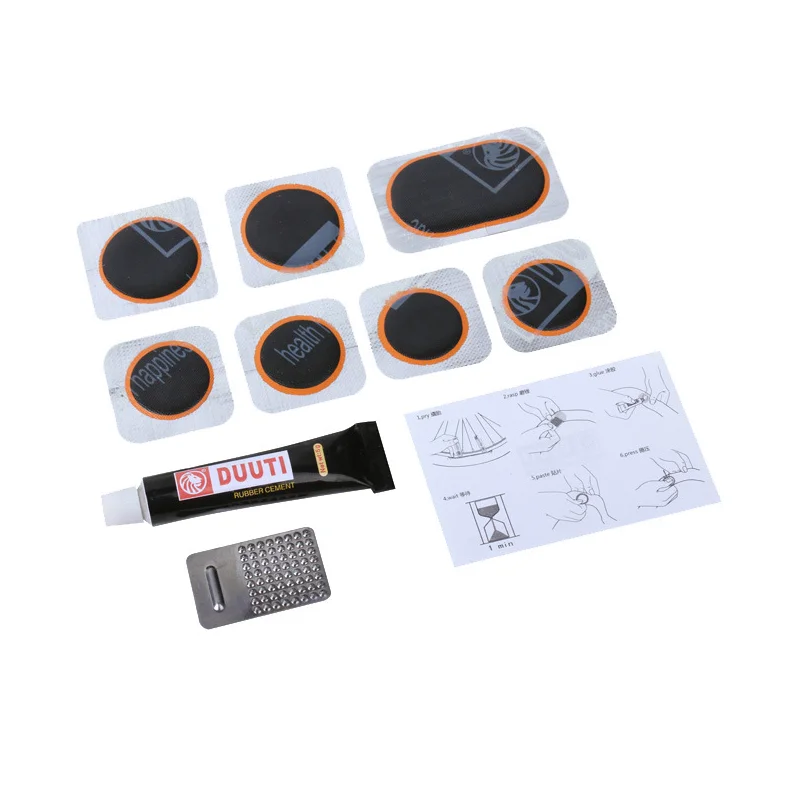 Here’s how.
Here’s how.
On a paved road, if your steering wheel starts to wobble vaguely in your hands, or if you hear a loud thumping sound that coincides with your wheels’ rotation, then you’ve got a flat tire. Off-road, at lower speeds, you’ll likely hear that thumping before you feel it. In both cases, avoid risking further damage to the tire or vehicle by finding the first safe location to pull off the road or trail.
Video loading...
Don’t Rely on Your SpareIt’s become less and less common for new vehicles to come equipped with a full-size spare tire. Space savers, or donuts, are only designed to get you a very short distance at very low speeds—across town to the tire shop, basically. You should avoid using a space saver on a dirt road or trail if at all possible.
And even if you have a full-size spare with a matching tire and wheel, it’s still possible to puncture more than one tire at a time. And man, that’s going to cause a big problem if you’re not prepared or if it happens somewhere you can’t easily call for help.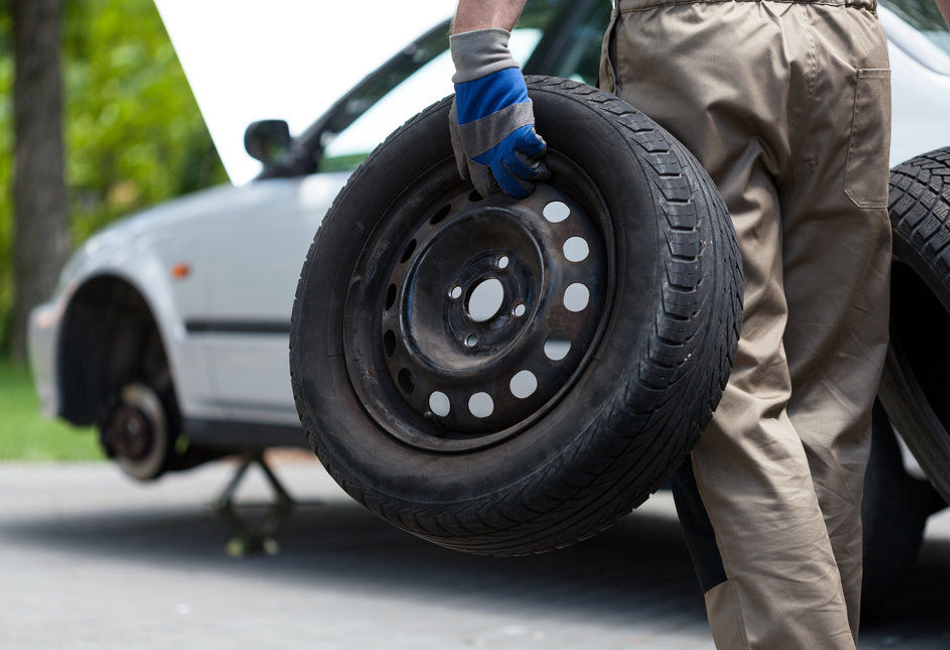
The tools you should have to fix a flat tire yourself don’t cost much more than getting a tire plugged at a tire shop. And they’re hundreds of dollars cheaper than calling for a tow. They’re also small and light. There’s really no excuse for not carrying this stuff in your car or truck.
The best tire-repair kit I’ve found is made by Boulder Tools and costs $38. Like other kits, it includes rope plugs and the tools you need to install them, but this one goes above and beyond by including items like needle-nose pliers, spare valve cores, and a folding razor blade.
You will also need a compressor. That’s what you’ll use to reinflate your tire after you fix the puncture, or how you’ll air back up to road pressures if you’re airing down for off-road driving. If all you need is an emergency option, one of these $23 Slime compressors is perfect. It plugs into your cigarette lighter (or 12-volt outlet), so you don’t even need to open your hood.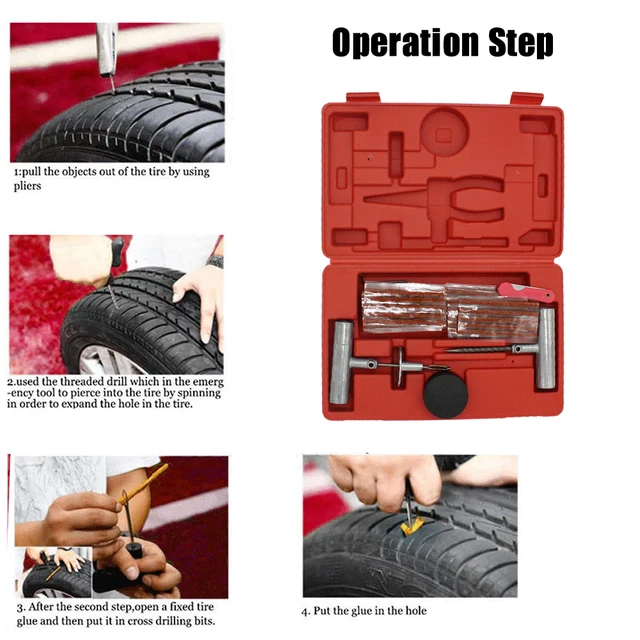 You don’t want to rely on something like this if you’re regularly inflating oversize off-road tires, but that’s a story for another time.
You don’t want to rely on something like this if you’re regularly inflating oversize off-road tires, but that’s a story for another time.
I also stick a can of Fix-a-Flat in every car my family owns, plus those of most of my friends. Fix-a-Flat includes both a sealant and compressed air in a single can, allowing you to take care of the kind of small punctures caused by a screw or nail without even removing the wheel. And that capability makes it a unique tool in your arsenal—one that can come in handy for even complicated repairs where it’s not safe to to try and remove a wheel or where gaining the ability to roll the car a few hundred yards can make the situation much safer (think: a steep slope off-road or the side of a busy highway, with trucks rushing past just feet away).
Everyone should also carry a quality tire-pressure gauge. Use it to check the pressure of your tires once a month, and adjust them to factory-recommended settings if they’re off. Ambient temperatures, elevation, and just time can all cause a tire to lose or gain pressure, and when it does so, it can harm your fuel economy, handling, and performance.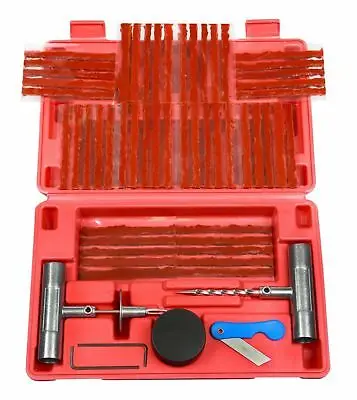
Regularly inspect your tires and replace them before the tread wears to 2/32nd of an inch deep. An easy way to check this is to insert a penny upside down into the tread (Lincoln’s head first). If the tread reaches past Honest Abe’s hairline at his forehead, you’re good. If not, order new tires. Tires worn to or past 2/32nd of an inch of tread will be much more prone to punctures and won’t provide the same grip as a tire in good condition.
Tires also have a maximum life span of six years. To determine how old your tires are, look for the tire identification number on the sidewall: it begins with DOT, is 11 digits long, and ends in four numbers. The first two digits of those last four numbers represent the week (of 52 in a year) the tire was manufactured. The last two are the year.
If your tire shows any signs of cracking or tearing, or if anything white or metallic has worn through the rubber, replace it immediately.
You also need to make sure you’re using an appropriate tire for the conditions you’re facing. If you’re traveling off pavement, a quality all-terrain tire will help you avoid punctures both in the tread and, more importantly, the sidewall.
If you’re traveling off pavement, a quality all-terrain tire will help you avoid punctures both in the tread and, more importantly, the sidewall.
Make sure any vehicle you’re driving has all of the necessary tire-change tools present and accounted for. You’ll need a lug wrench and a jack at a minimum. Don’t be that person who forgets to put them back into a car. I even check for these things in rental cars before driving off—they’re that essential.
Right in the middle of your tread is a good place to find a foreign object. (Nathan Norby)Step One: Find the PunctureOnce you’re in a safe place, hop out of the car, and find the flat tire. Try to identify the source of the puncture. Sometimes a foreign object will be very obvious at just a glance. Sometimes you’ll need to roll the car a foot or two to expose the problem.
If you are able to see that there’s obviously a nail or screw embedded in your tire’s tread, that’s good news. If the nail or screw is strongly embedded into the tire’s tread, there’s no need to remove it at this time. Get out your can of Fix-a-Flat, follow its directions to connect it to your tire valve, and empty the entire contents of the can into the tire. You should see the tire visibly inflate. If it returns to normal, drive off immediately, go a few miles, then stop and check your tire pressure, adjusting it if necessary. If the tire seems to be holding air, you’re good to continue driving, but take a look at the tire any time you stop. When you get back from your trip and have the time, go ahead and follow the rest of the steps here to repair the puncture with a plug.
Get out your can of Fix-a-Flat, follow its directions to connect it to your tire valve, and empty the entire contents of the can into the tire. You should see the tire visibly inflate. If it returns to normal, drive off immediately, go a few miles, then stop and check your tire pressure, adjusting it if necessary. If the tire seems to be holding air, you’re good to continue driving, but take a look at the tire any time you stop. When you get back from your trip and have the time, go ahead and follow the rest of the steps here to repair the puncture with a plug.
If you can’t find the source of the puncture, if it’s an exposed hole, or if you don’t have a can of Fix-a-Flat, you’ll need to take the wheel off.
Step Two: Remove the WheelFirst, remove your spare (even if it’s a space saver), and place it under the frame of your vehicle in front of the front tire or behind the rear tire. That way, if your vehicle falls off its jack, it will fall onto the spare, minimizing injury to you and damage to the car.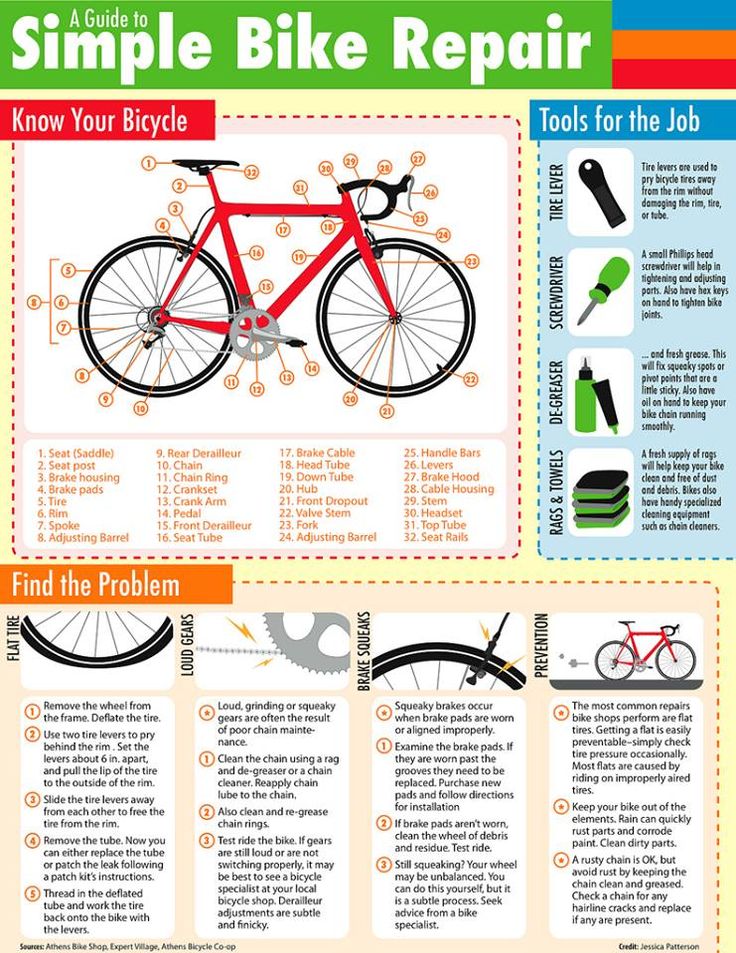
Loosen the lug nuts before you raise the vehicle. Remember: lefty loosey.
Next, follow the instructions in your owner’s manual to locate and use the jack accordingly.
Once the wheel is off the ground, finish removing the lug nuts. Put them somewhere safe. Pull the wheel out toward your body. Be careful—wheels can be heavy.
Step Three: Evaluate the PunctureIf you have a hole in your tread, it can be fixed. Tires in good condition won’t experience more than a simple hole in that location. If the hole is in your sidewall (the portion of the tire that rides roughly vertical), you just need to mount your spare and have the tire replaced at the first possible opportunity.
If the hole is in the tire’s tread and can’t be taken care of by simply dumping a can of Fix-a-Flat into it, roll the tire around to the back of your vehicle where tools are and where you can safely work away from traffic. Look for holes and foreign objects as you roll it. If a hole is small and the tire is no longer leaking air, it may be a good idea to mark the hole for easy reference later.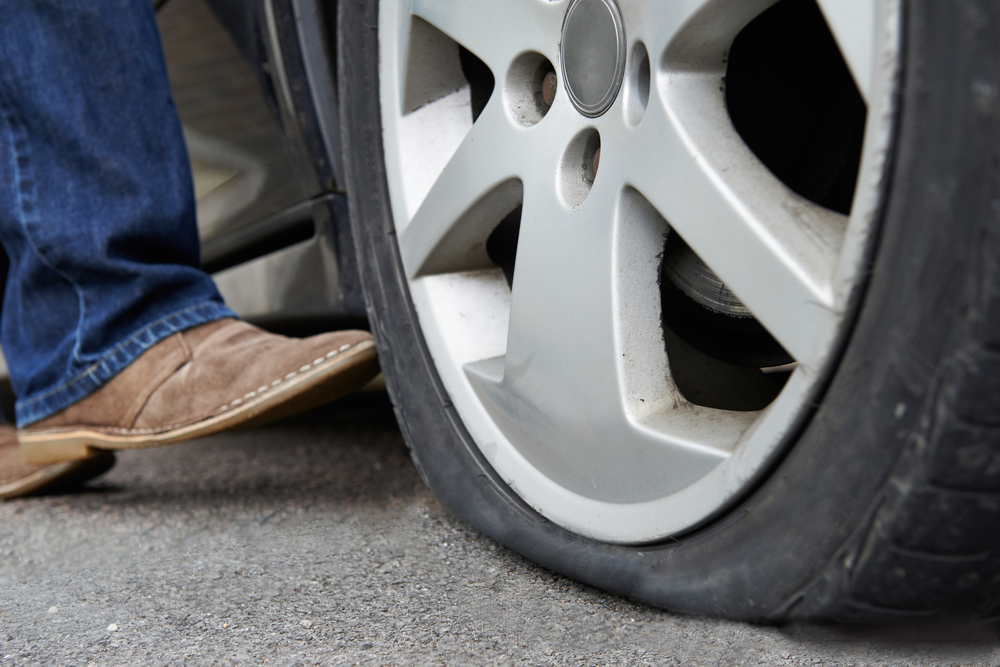
If there’s a foreign object in your tire, and the tire can no longer hold air, remove it. In the video, I used a screw gun to put the screw in the tire, meaning its threads engaged with the rubber and steel belts. Most roads don’t have their own screw guns, so the puncture won’t engage the threads in the same way, and it should be easier to pull out using your needle-nose pliers.
I’ve seen tires punctured by everything from a steel bar to a particularly nasty cactus barb. Organic objects like tree branches can leave residue behind. Try and get all of that out of the way.
The reaming tool will slowly enlarge and clean the hole. (Nathan Norby)Step Five: Enlarge the HoleIf the hole is larger than a pencil, skip this step. If not, grab your tire-repair kit’s reamer, and use it to enlarge the hole until it is roughly the size of a pencil.
If you have a very small hole, this will be difficult at first. Install the reaming tool by slowly screwing it into the tread while applying downward pressure. Otherwise, just push the tool into the hole all the way up to the handle, then yank it out. Repeat until the hole is large enough that you can insert and remove the tool without much effort.
Getting the plug through the eyelet can be fussy. These things are designed to be difficult to remove from a hole, not easy to insert into one. The pliers will help. (Nathan Norby)Step Seven: Install the PlugRemove a rope plug from the plastic wrapper, flatten one end with the needle-nose pliers, and push it through the eyelet on the installation tool. Grasp the protruding edge of the plug with the pliers, and pull it through the eyelet until equal lengths of the plug protrude from both sides.
Grab a finger of lube from the kit, and apply it to the plug and leading edge of the tool.
Firmly push the installation tool in as far as it will go, then yank it out as hard as you can.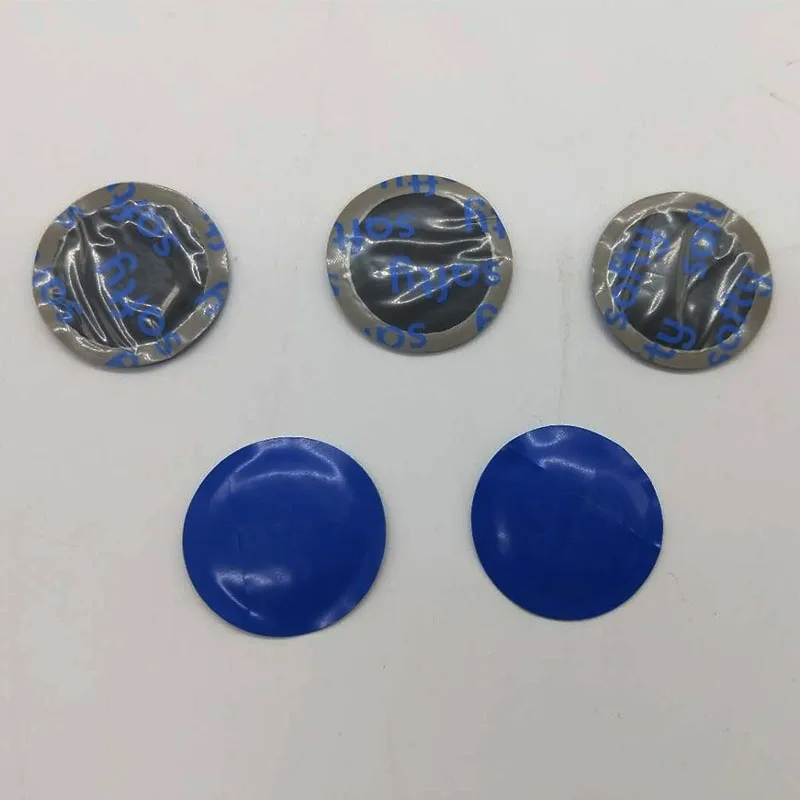 (Nathan Norby)
(Nathan Norby)Place the tool tip down on top of the hole in the tire, grasp the tool securely with both hands, and force it through the tire until the depth guide is flush with the tread. Then yank the tool straight out of the hole as hard and fast as you can. The rope plug should pass through the eyelet and remain inside the tire.
The plug should remain in the tire when you yank the tool out. Now just trim off that excess length. (Nathan Norby)If you have only a small puncture, one plug should do. If not, you may need to install a second or third. If you must install multiple plugs, then plan on taking that tire to a shop the first possible opportunity, where it can be evaluated for safety. You may have to replace it. But most of the time, that single plug will be enough. Use the razor to trim the excess length flush with the tire tread.
If your tire holds air up to the recommended pressure, then odds are it’s going to be good to go. Just check the pressure again after a few miles to make sure.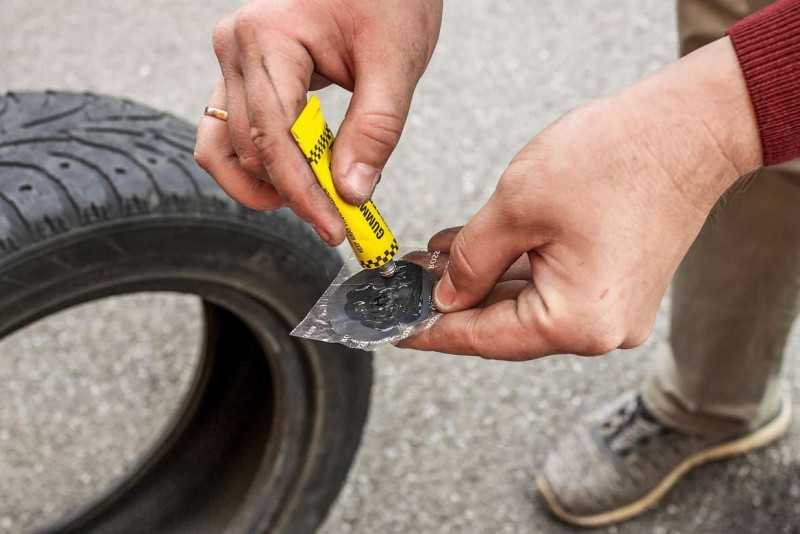 If for some reason you’re losing a little air around the plug, try adding Fix-a-Flat. (Nathan Norby)Step Eight: Reinstall the Wheel
If for some reason you’re losing a little air around the plug, try adding Fix-a-Flat. (Nathan Norby)Step Eight: Reinstall the WheelUse your air compressor to inflate the tire to the recommended pressure. (You’ll find that listed inside the driver’s doorjamb.) Once inflated, reverse the tire-removal steps described above to reinstall the wheel. First, install the lug nuts by hand to secure the wheel to the hub. Then, once you’ve lowered the vehicle back down and removed the jack, use the lug wrench to make sure all the lug nuts are as tight as possible. Tighten them in a star pattern, so the wheel snugs back to the hub evenly. Remember: righty tighty. Check these again later that day.
Return all your tools, the jack, and the lug wrench to their proper locations. You’d don’t want to misplace this stuff.
And that’s it. No tow truck. No hiking out a dirt road in search of help. No waiting on AAA while sitting on the side of a busy highway. No huge expense. And no more than a few minutes of hard work.
And no more than a few minutes of hard work.
A flat tire affects many motorists throughout the life of their vehicle. This can happen after an impact, due to poor tire pressure, or due to a foreign object. It can be a fast puncture that is easy to notice, or, conversely, a slow puncture that is sometimes difficult to notice.
La puncture This is a disease that can affect any tire: a car tire, of course, but also a bicycle, for example. A puncture is determined by the wear on a tire, usually a punctured one, which then deflates.
But there are actually different types and causes of punctures, including:
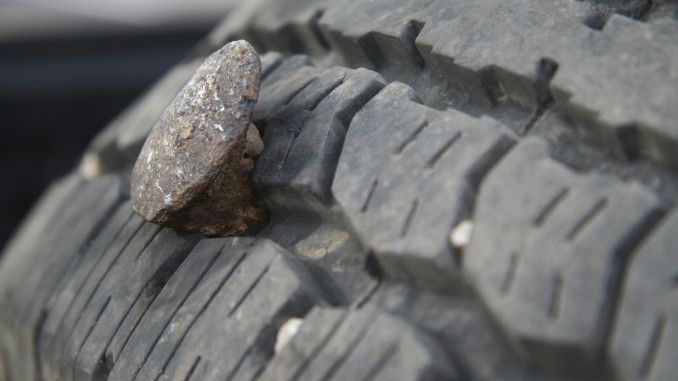 ) that pierces the tire, usually at tread level.
) that pierces the tire, usually at tread level. We also need to distinguish fast puncture , as it is due to shock, from what is called slow puncture . This is characterized by slow deflation, which is sometimes difficult to notice. In fact, loss of tire pressure while driving is normal (approximately 0.1 bar per month).
But a greater loss of pressure should alert you. Therefore, we recommend checking the tire pressure once a month.
When a puncture occurs suddenly, it is usually difficult to miss. Whether it's a curb crash or a tire explosion on the highway, you can't miss it. However, sometimes finding a slow puncture can be more difficult.
Every month your tires lose about 0. 1 bar pressure. If you notice a significant and persistent loss of pressure, it could be a puncture. If it is installed in your vehicle, the tire pressure warning light may come on indicating a problem.
1 bar pressure. If you notice a significant and persistent loss of pressure, it could be a puncture. If it is installed in your vehicle, the tire pressure warning light may come on indicating a problem.
Start by repeating the pressure and make sure the fall continues. Once this is confirmed, inspect the tire (sidewall and tread) for any foreign objects that may have pierced it: a screw, a nail, various debris.
If this does not help, pour soapy water or Leak Detection Fluid on the tire and look for bubbles indicating air is escaping.
A puncture immobilizes the vehicle, especially if it is a quick puncture that will immediately deflate the tire. In order not to call a tow truck and not give yourself time to go to the garage, the tire can be repaired, depending on the nature of the puncture, or the wheel can be replaced.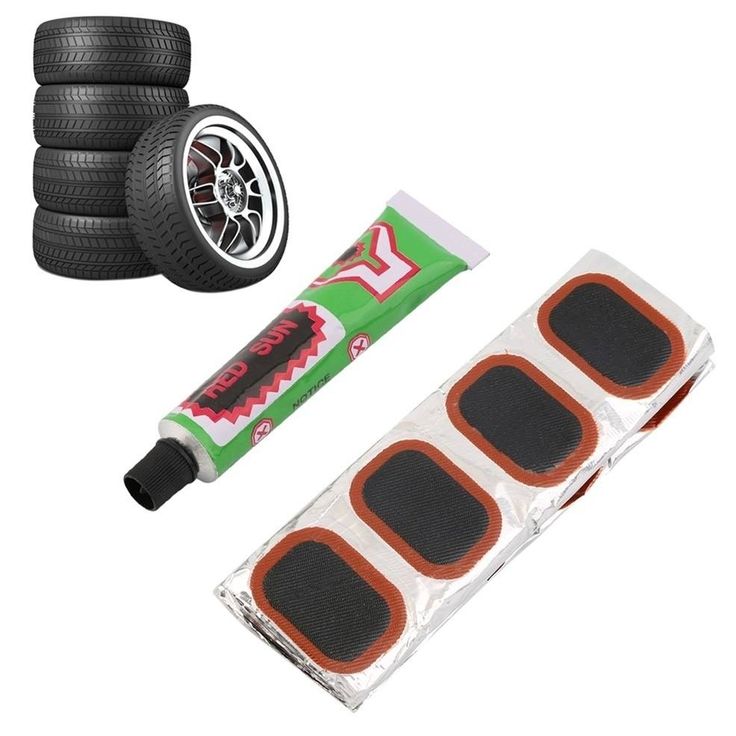
Material:
Then jack up the vehicle with the jack supplied with the spare wheel and finish removing the nuts. Then remove the wheel to replace it. However, be careful if it's a pancake: do not exceed 80 km / h and quickly replace it with a real tire.
If it is a tubeless tire and the puncture is small and on the tread, it can be repaired tire sealant . If the gap is too large or located on the sidewall, you will have no choice but to replace the wheel.
If the gap is too large or located on the sidewall, you will have no choice but to replace the wheel.
To repair a puncture, remove the valve from the tire and place tire sealant on the nozzle. Pour it completely out of the tire and drive a few kilometers to ensure that the product is well distributed on the inside of the tire. Please note: Tire sealant is only a temporary solution.
Finally, there are puncture repair kits that can consist of Highlights , Plaster or Compressor and Blockage . Like tire sealant, these kits are temporary fixes that will get you repaired by the time you get to the garage to change your tire.
Some punctures can be repaired: in this case, it is not necessary to change the tire immediately.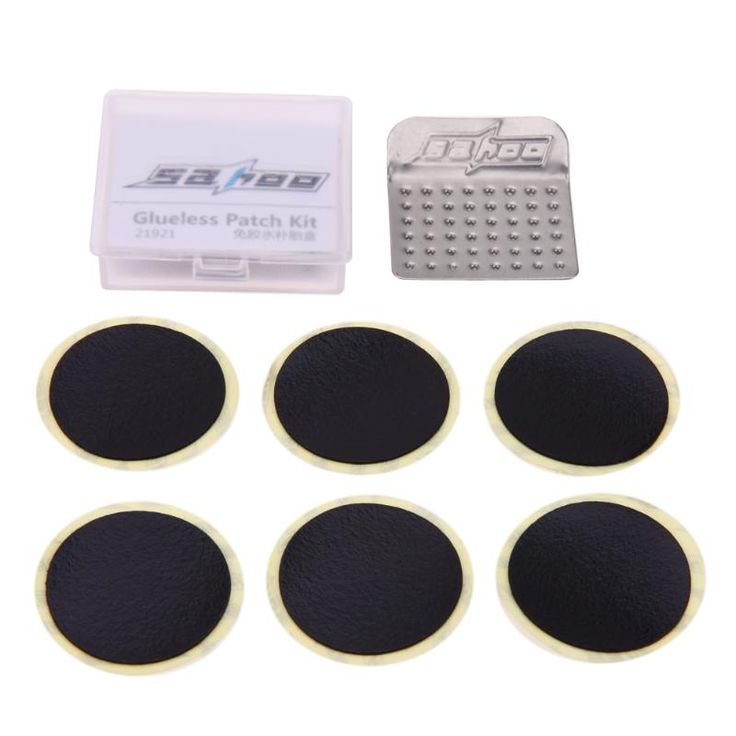 Depending on whether you have to remove the wheel for repair, calculate the cost From 20 to 30 € about. This price includes tire balancing.
Depending on whether you have to remove the wheel for repair, calculate the cost From 20 to 30 € about. This price includes tire balancing.
If the puncture cannot be repaired, the tire will need to be replaced. But be careful: the difference in wear of two tires on the same axle cannot exceed 5mm . In other words, both tires may need to be replaced.
The price of a tire depends on the brand, size and category (summer / winter). Count From 30 to 60 € for a tire. Add to that the cost of assembly and balancing (approximately 15 € per tyre) and possibly rims.
Now you know what punctures can occur on a car tire. You also know how to identify a slow puncture and how to act in the event of a puncture. We remind you that all these repairs are temporary and after a puncture it is necessary to contact a mechanic.
0005
(1) Compressor
(2) Sealing fluid bottle
The Tire Mobility Kit is for temporary tire repair only, so the tire should be checked by an authorized Kia dealer as soon as possible.
If two or more tires are flat, do not use the Tire Mobility Kit because the suggested sealant in the Tire Mobility Kit is only enough for one tire.
Do not use the Tire Mobility Kit to repair sidewall punctures. This can lead to accidents due to a defect in the tire.
- Temporary repair Have the tire repaired as soon as possible. Tire pressure can drop at any time after being inflated with TMK.
Introduction
The Tire Mobility Kit keeps the tire from changing when a tire punctures.
The system consists of a compressor and a sealing liquid that effectively and reliably seals punctures in passenger car tires caused by nails and similar objects and increases the air pressure in the tires.
After making sure that the tire is properly sealed, you can carefully drive on this tire (for a distance of no more than 200 km (120 miles)) at a speed of no more than 80 km/h (50 mph) to the nearest car dealer or tire dealer, to change a tire.
Some tire damage, especially large holes or side cuts, cannot be fully sealed.
A drop in tire pressure can adversely affect the behavior of the vehicle.
Therefore, avoid sudden movements of the steering wheel and other maneuvers of the vehicle, especially if the vehicle is heavily loaded or driven with a trailer.
The Tire Mobility Kit is not designed or intended to repair a damaged tire and may only be used on one wheel of a vehicle.
Below are step by step instructions for a simple and reliable temporary sealing of a tire puncture.
Read the information in the Notes on Safe Use of the Tire Mobility Kit.
Tire Mobility Kit if the tire is severely damaged by running with a flat tire or insufficient air pressure. The Tire Mobility Kit can only seal punctured areas within the tire tread.
Tire Mobility Kit (TMK) system components
0. Speed limit label
1. Sealing fluid bottle and speed limit
2.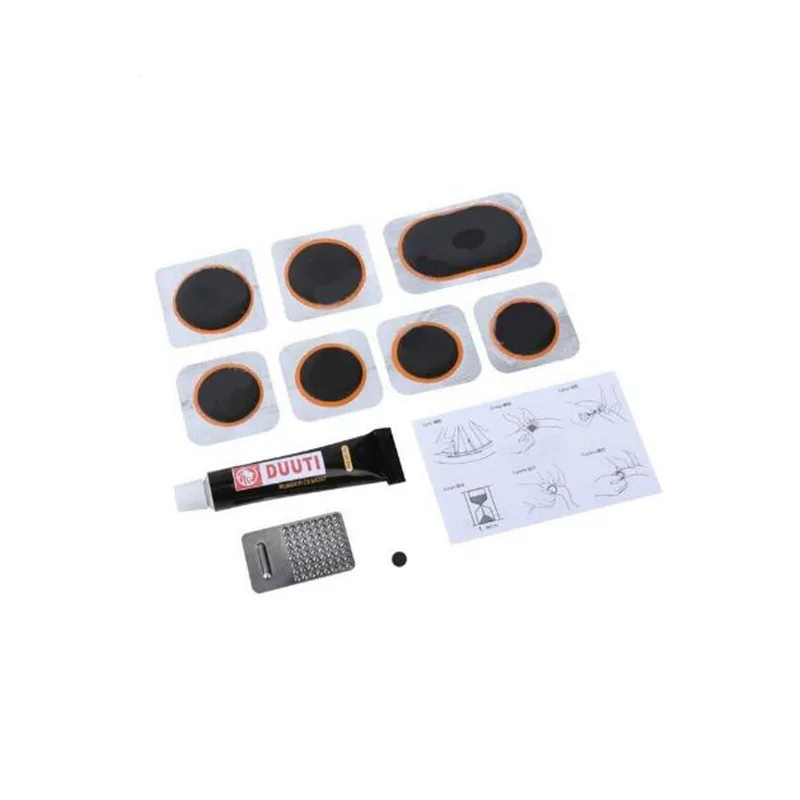 Inlet hose connecting sealing fluid bottle and wheel 3
Inlet hose connecting sealing fluid bottle and wheel 3
4. Holder for sealant bottle
5. Compressor
6. Power switch
7. Pressure gauge for displaying tire pressure
8. Button for reducing tire pressure
9. Hose for connecting the compressor and sealing fluid container or compressor and wheel
Connectors, cable and connecting hose are located in the compressor housing.
- Sealant expired Do not use tire sealant if the sealant has expired (for example, if the sealant labeled on the container has expired). This may increase the risk of tire damage.
• Keep out of reach of children.
• Avoid contact with eyes.
• Avoid ingestion.
Strictly follow the sequence shown, otherwise the sealant may leak out under high pressure.
Using the Tire Mobility Kit (TMK)
speeding.
2. Screw the connecting hose (9) to the connector on the sealant bottle.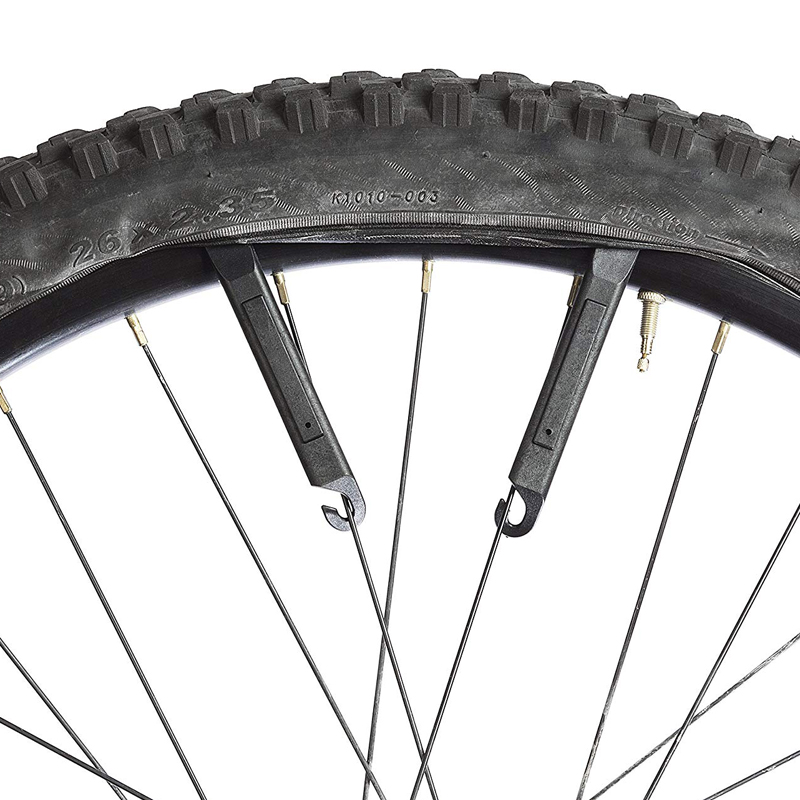
3. Make sure the screw cap (8) is closed.
4. Unscrew the valve cap on the damaged wheel and screw the inlet hose (2) from the sealant container onto the valve.
5. Insert the container of sealing liquid into the compressor housing so that the container is vertical.
6. Make sure the compressor is off, the button is in position 0.
7. Connect the compressor power cable to the power socket on the passenger side.
WARNING connect the power cable only to the power socket on the passenger's side.
8. With the engine switch in the start/stop position or with the ignition key in the on position, turn on the compressor and let it run for 5~7 minutes to build up the desired sealant pressure. (See “Tires and wheels” in chapter 8). The tire pressure after inflation is not important and can be adjusted later.
Be careful not to over inflate the tire or stand near the wheel while inflating.
Do not attempt to drive if the tire pressure is below 200 kPa (29 PSI).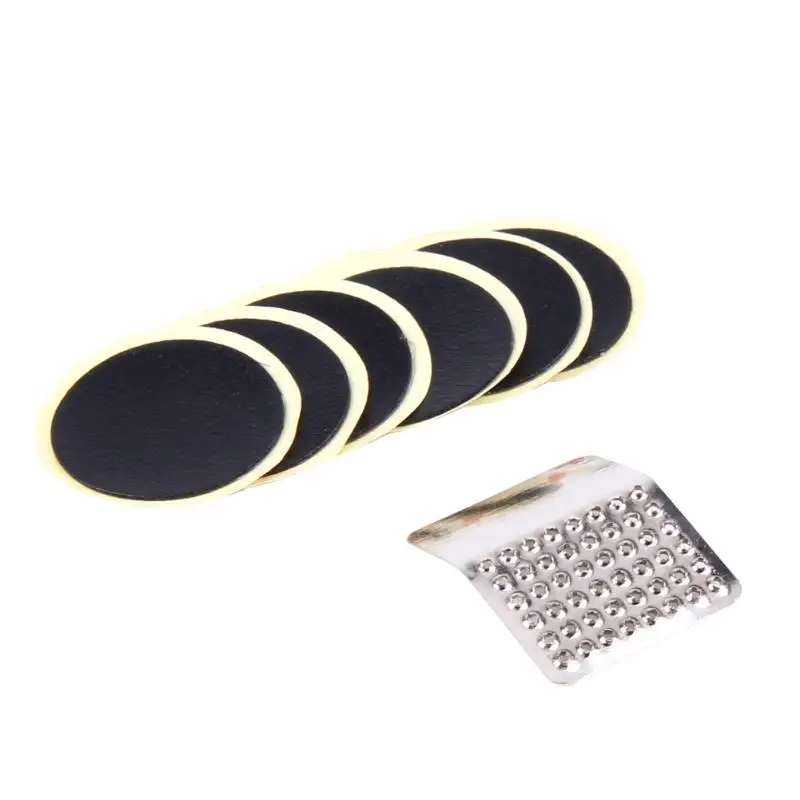 This can lead to accidents due to a defect in the tire.
This can lead to accidents due to a defect in the tire.
9. Switch off the compressor.
10. Disconnect the hoses from the sealant bottle connector and wheel valve.
Put the TireMobilityKit in its designated place in the vehicle.
Operating the engine in a poorly ventilated or unventilated area (such as inside a building) can cause carbon monoxide (carbon monoxide) poisoning and asphyxiation.
Spreading Sealant Fluid
11. Immediately drive a short distance of about 4~6 miles (7~10km or about 10 minutes) to evenly distribute the sealant in the tire.
WARNING do not exceed 60 km/h (35 mph). If possible, do not drive at speeds below 20 km/h (12 mph).
If you experience abnormal vibrations, difficulty driving, or unusual sounds while driving, slow down and drive carefully to the side of the road in a safe place.
Call for repair or towing vehicle.
Tire Mobility Kit sealant can damage tire pressure sensor and disc.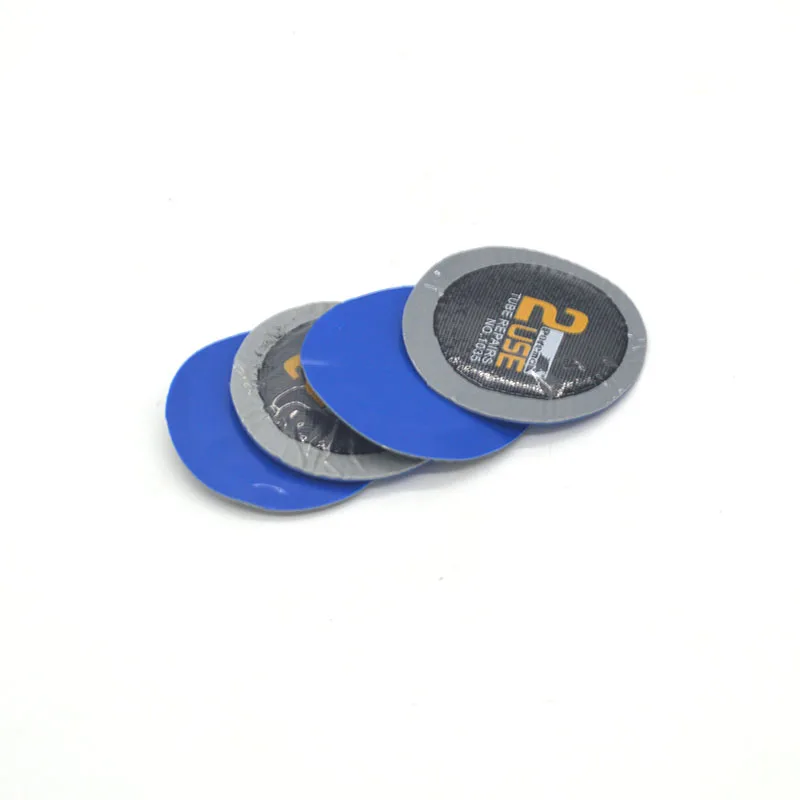 Any sealant on these parts must be removed and checked by an authorized Kia dealer.
Any sealant on these parts must be removed and checked by an authorized Kia dealer.
Checking tire pressure
1. After driving approximately 7 to 10 km (4 to 6 miles), stop the vehicle at a convenient location.
2. Connect the connecting hose (9) of the compressor directly to the wheel valve.
3. Connect the compressor to the car's power outlet using the cable and connectors.
4. Adjust the tire pressure to the recommended value with the ignition on, proceed as follows.
- To increase tire pressure: Turn on the compressor (set the switch to position I). To check the current level of tire pressure, turn off the compressor for a short time.
The pressure gauge may show a higher value than the actual value when the compressor is running. To obtain an accurate tire pressure, turn off the compressor.
WARNING Do not run the compressor for more than 10 minutes. Otherwise, the compressor may overheat and fail.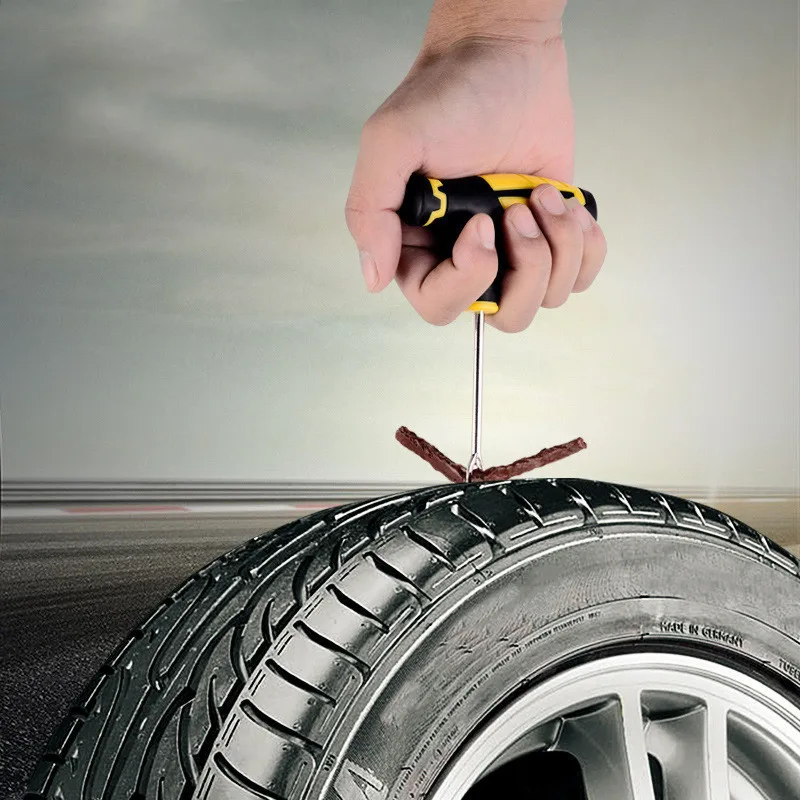
-To reduce tire pressure: Unscrew the screw cap (8) from the compressor hose.
If inflation pressure does not hold, drive the vehicle again (see Sealant Distribution section). Then repeat p.p. 1 - 4.
The use of the TireMobilityKit may not be effective on tires that are more than approximately 4 mm (0.16 in) damaged. If you are unable to repair the tire using the Tire Mobility Kit, we recommend that you contact an authorized Kia dealer
Tire inflation pressure must be at least 200 kPa (32 psi). Otherwise, you should not continue driving the car. Call roadside assistance and towing vehicles.
Tire Mobility Kit Safety Notes
• Park your vehicle on the side of the road so that you can operate the TireMobilityKit away from traffic. To inform drivers of passing cars of your location, place an emergency stop sign in a place that they can see.
• To keep the vehicle stationary, even on reasonably level ground, always apply the parking brake.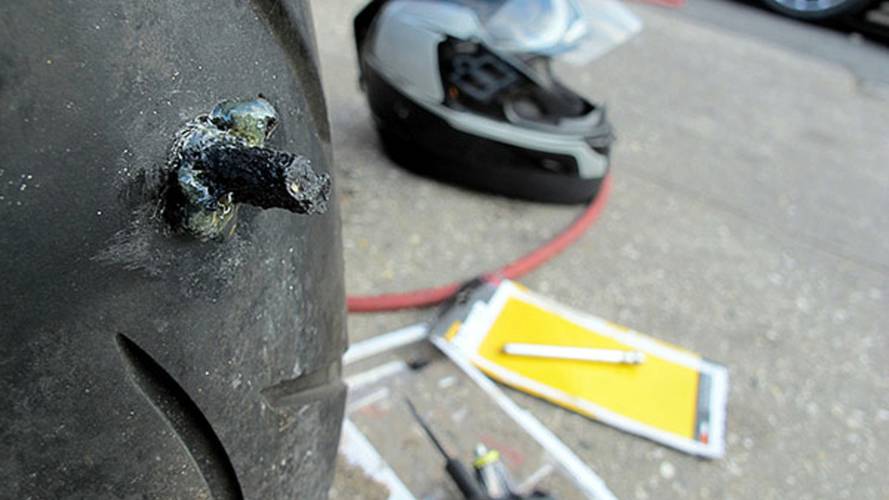
• Use the TireMobilityKit to seal passenger car tires only. Do not use it on motorcycles, bicycles or other types of tires.
• Do not remove foreign objects that have entered the tire, such as nails or screws.
• Before using the Tire Mobility Kit, read the safety precautions printed on the sealant bottle!
• When using the kit outdoors, leave the vehicle engine running. Otherwise, the operation of the compressor may eventually lead to the exhaustion of the vehicle's battery.
• Never leave the TireMobilityKit unattended while in use.
• Do not leave the compressor running for more than 10 consecutive minutes, otherwise it may overheat.
• Do not use the TireMobilityKit if the ambient temperature is below -30°C (-22°F).
• If the tire and wheel are damaged, do not use this tire repair kit for safety reasons.
Technical data
System voltage: 12 V DC
Operating voltage: 10 to 15 V DC Current: 15 A or less Suitable for use at ambient temperature: -30 ~ +70°C (-22 ~ +158°F)
Maximum working pressure: 6 bar (87 psi) Size
Compressor: 170 x 150 x 60 mm
(6.